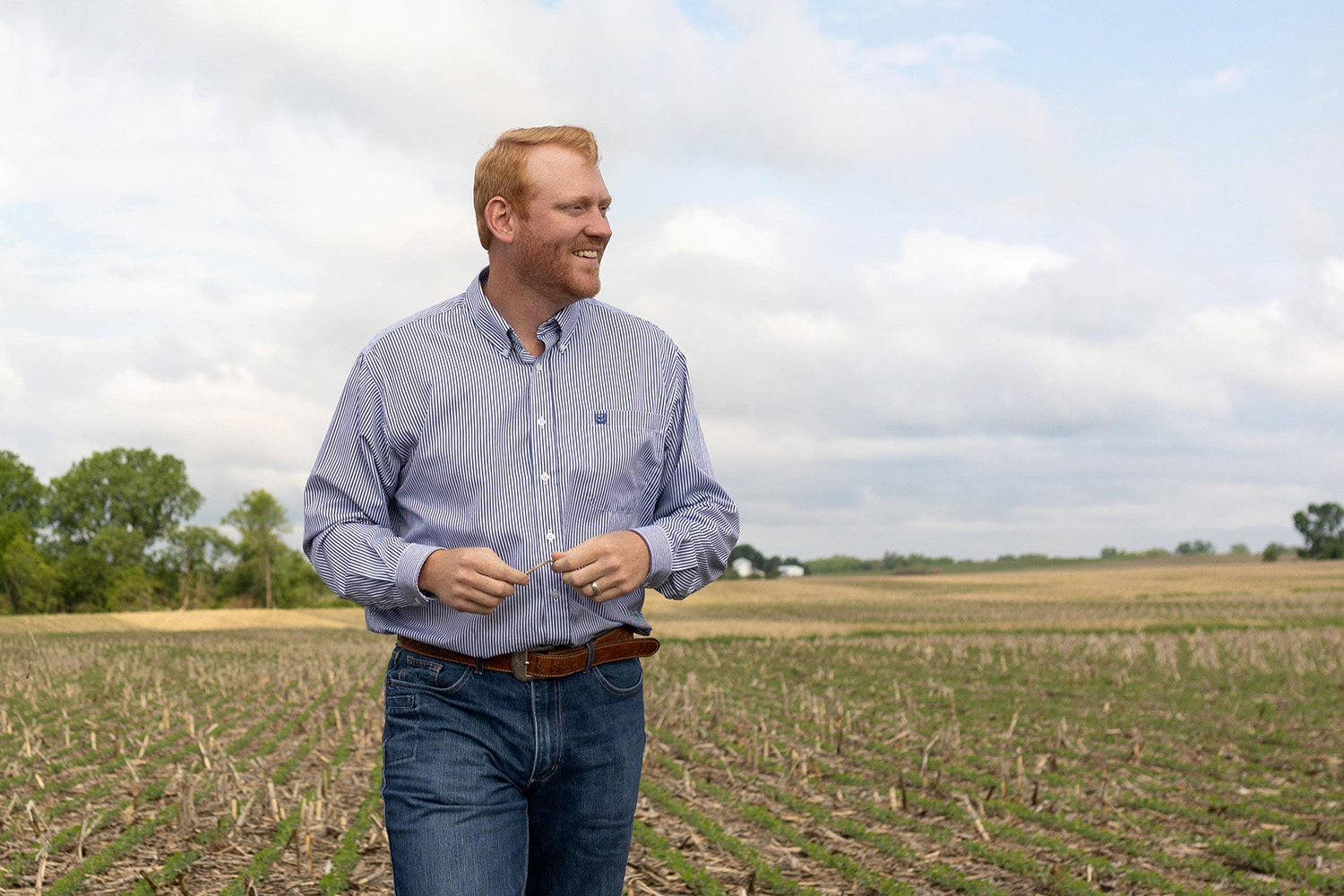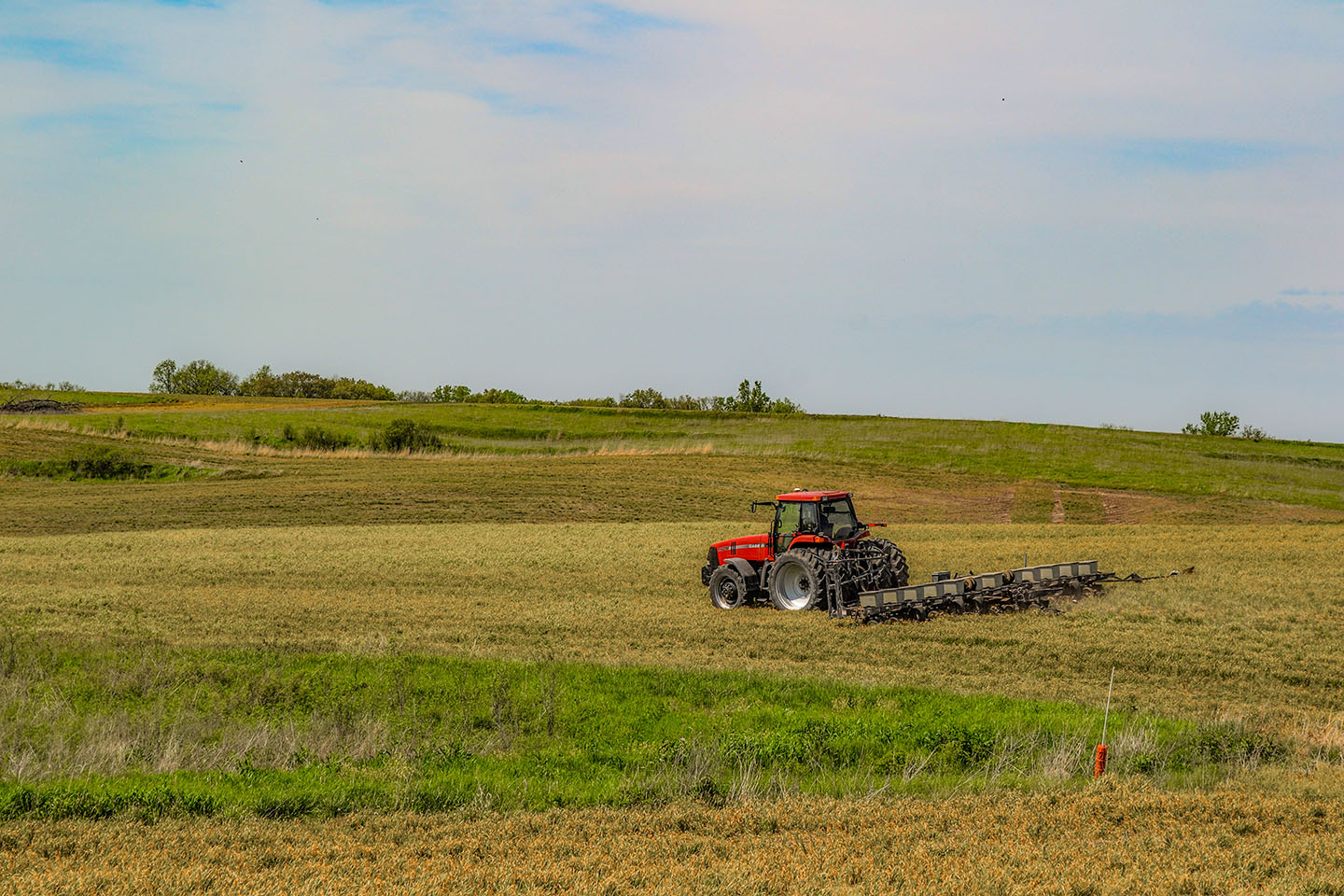
(Photo: Joclyn Bushman/Iowa Soybean Association)
5 questions to consider before cashing in on carbon credits
July 1, 2022 | Brock Johnston
Farmers are often called the original land stewards. As modern agriculture continues to evolve, Iowa farmers are at the forefront once again – improving efficiency in a sustainable, productive and profitable way. Exchanging carbon credits, or financial incentives for conservation practices yielding positive environmental outcomes like carbon sequestration, could be an added benefit to natural resource management.
The Soil and Water Outcomes Fund (SWOF), a partnership between ReHarvest Partners and AgOutcomes (an Iowa Soybean Association (ISA) subsidiary), is one carbon program positioned to provide direct payments to farmers who implement new practices that enhance soil health and improve water quality.
As one of Iowa’s 40,000 soybean farmers, could selling carbon credits help you reach your stewardship goals?
To learn more about the emerging market of incentivized carbon reduction, Joe Winchell, senior conservation agronomist with AgOutcomes, answers five questions to consider before cashing in on carbon.
What is a carbon credit?
Winchell: One carbon credit is equal to one metric ton of carbon dioxide equivalent (CO2e). The implementation of conservation practices have the ability to sequester CO2e in the soil. The ultimate goal of these credits is to reduce the emission of greenhouse gases, or to lower the carbon intensity score of products in the agricultural supply chain.
How does the enrollment process work?
Winchell: First, the Soil and Water Outcomes Fund establishes outcome purchase agreements with customers. SWOF sells environmental credits purchased from farmers to beneficiaries, including public entities and corporations, seeking to offset emissions in their supply chain or improve water quality.
To participate in a carbon program, farmers and landowners must enter some initial information to determine enrollment eligibility. The amount of land information needed upfront varies across carbon programs. With SWOF, farmers can access an online portal to enter baseline and future cropping system information, including field boundaries and past and proposed practice information.
Next, SWOF participants must propose and be willing to adopt at least one new conservation practice to enroll acres. SWOF is not prescriptive about the conservation practice(s) a farmer chooses to implement. Typically, farmers are utilizing cover crops, no-till, reduced tillage or extended crop rotations.
After signing a contract, SWOF will provide payments to farmers based on the resulting environmental outcomes produced. Outcomes from implemented conservation practices are then measured, monitored and verified using USDA-approved models, remote sensing and sampling. Once verified, environmental outcomes are sold to outcome customers.

What do I need to qualify?
Winchell: Aside from entering land and practice information, a few factors influence a farmers’ ability to enroll acres with SWOF. These include geographic region and compliance status of prospective acres.
Farmers and landowners with acres located in 23 Iowa counties are currently eligible to participate in the program. These counties include Benton, Black Hawk, Boone, Buchanan, Cedar, Dubuque, Grundy, Hamilton, Iowa, Jasper, Jefferson, Johnson, Keokuk, Linn, Mahaska, Marion, Monroe, Muscatine, Poweshiek, Story, Tama, Wapello and Webster.
As SWOF continues to scale the number of enrolled farmers and beneficiaries, the program is eyeing new areas in Iowa and throughout the country for expansion.
In addition, proposed acres must be highly erodible land and wetlands compliant to qualify for enrollment. Acres currently enrolled in government cost share programs are not eligible for enrollment with SWOF.
What does a contract look like?
Winchell: Contract length and payment vary across carbon programs. SWOF contracts currently run from the time of signing until June 1 of the following year. Farmers have the opportunity to re-enroll acres if they are willing to continue or add more practices.
Participants will receive 50% of the payment based on estimated outcomes upon contract signing. The remaining half is paid once contract compliance has been verified. In 2021, participating farmers received an average payment of $31 per acre.
What sets SWOF apart from other carbon programs?
Winchell: Unlike other programs, payments distributed to farmers by SWOF are based on the environmental outcomes produced, rather than the specific practices implemented.
Because SWOF provides compensation to farmers for water quality improvements in addition to carbon (CO2e) outcomes, we are often paying farmers more when compared to other carbon programs.
Using multiple conservation practices on your operation, such as planting cover crops alongside reduced tillage, will generate a larger number of environmental outcomes. Increasing the number of produced outcomes results in higher payment return.
From a technical assistance perspective, SWOF conservation agronomists are available to guide and provide resources for farmers during the practice implementation process.
Looking ahead
Like many industries, agriculture is a carbon contributor. However, farmers continue to use methods to reduce their environmental footprint and enhance natural resources for future generations.
While carbon programs may be a good fit for some, farmers should ask questions about how participation impacts their operations.
To learn more, visit SWOF at theoutcomesfund.com.
Back